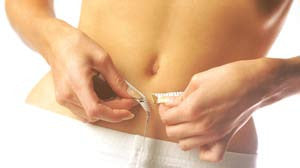I had a fantastic experience purchasing this treadmill. The sales team was extremely patient and provided thorough explanations to help me choose the right model. Delivery was fast and the packaging was secure—everything arrived in perfect condition. The treadmill itself feels safe, sturdy, and easy to use. It’s also stylish and runs smoothly. For the price, the quality is outstanding—truly great value for money. After-sales service has been very helpful and responsive as well. Overall, I’m very satisfied and highly recommend it!
I worked my old treadmill until it wouldn't go any more. Lets see how long I can run this one.
Easy and reliable company to purchase from. The treadmill works great and was very easy to put together. Highly recommend Endurance Treadmills!
Ordered some maintenance supplies - easy to order and delivered promptly - just what you want.
This review is for the Endurance SPT after 1 year of ownership.
I'll start by saying the online support prior to delivery was excellent. Our treadmill was purchased just prior to Christmas 2023 whilst on sale through Endurance's official Amazon shop. We were departing for holidays within a few days and were in the predicament of possibly having the treadmill delivered whilst being away. We reached out and their support was very good and responsive, and were able to organise from memory a next day delivery (we live in Sydney).
The treadmill is a medium size and weight, giving it a solid enough feel in build quality and stability, however remaining light enough to be easily moved around by myself or wife if needed. As other reviews may have mentioned, set up may be quite difficult if done alone, however instructions and steps are itself easy.
Here are my likes, dislikes, and observations from the last year of ownership.
Likes:
User interface - simple as a treadmill should be with large buttons as well as controls on the handles
Running belt - made of a hard-wearing plastic material which provides plenty of grip however also won't cause friction burns on intermittent skin contact (safer with children)
Form factor - Being able to fold up the treadmill and move it around the house is great
Speed and incline options - More than enough settings for 99% of the population
Finish - The materials used and the coatings on the frame are good quality and show almost no wear from a year of use
Dislikes:
Heartrate sensors - Located on the handles, these sensors are probably only for those continuously walking. They take too long to establish a reading (e.g. walking after conducting a run)
Lack of waterproofing - This may sound silly, however I myself generate a lot of sweat during a run, and there are a couple vulnerable points on the treadmill where water/sweat may ingress. These include the speed/incline adjustment buttons on the handles, the usb port, and the speakers. This vulnerability is serious enough that even after a wipe down after every use, I have had an instance where the treadmill was unable to turn on for multiple days in a row due to this. To combat this I now have to drape a towel over the whole upper section of the treadmill when in use by myself.
Other observations:
Size of the track - I am 175cm tall and find the track a perfectly adequate size for running. I would still say the track size does initially take getting used to and you will find yourself consciously aware of the sides and end of the track, however this is no longer a factor.
Somewhat limited quick-select speeds - I think more space on the interface should be dedicated to adjusting the speed and less controlling the incline. Quick-select buttons on the screen interface only go up in speeds of 2km/h up to 10km/h which can mean constantly holding down the increase button for a short while if you want to run at speeds greater than 10km/h (only increases in increments of 0.1km/h per press).
Pricing - I think at the time whilst on sale, this treadmill was a very good purchase and great value, however whilst writing this review there are currently some other comparable treadmills which I would say are very competitively priced.











 Maximum strength can be referred to as Strongman (or woman) type of strength the ability to lift as heavy a weight as possible. This test is not recommended for those ready only for a low level programme.
Maximum strength can be referred to as Strongman (or woman) type of strength the ability to lift as heavy a weight as possible. This test is not recommended for those ready only for a low level programme.










